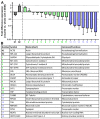Preparation of Viable Human Neurites for Neurobiological and Neurodegeneration Studies
- PMID: 38334634
- PMCID: PMC10854604
- DOI: 10.3390/cells13030242
Preparation of Viable Human Neurites for Neurobiological and Neurodegeneration Studies
Abstract
Few models allow the study of neurite damage in the human central nervous system. We used here dopaminergic LUHMES neurons to establish a culture system that allows for (i) the observation of highly enriched neurites, (ii) the preparation of the neurite fraction for biochemical studies, and (iii) the measurement of neurite markers and metabolites after axotomy. LUHMES-based spheroids, plated in culture dishes, extended neurites of several thousand µm length, while all somata remained aggregated. These cultures allowed an easy microscopic observation of live or fixed neurites. Neurite-only cultures (NOC) were produced by cutting out the still-aggregated somata. The potential application of such cultures was exemplified by determinations of their protein and RNA contents. For instance, the mitochondrial TOM20 protein was highly abundant, while nuclear histone H3 was absent. Similarly, mitochondrial-encoded RNAs were found at relatively high levels, while the mRNA for a histone or the neuronal nuclear marker NeuN (RBFOX3) were relatively depleted in NOC. Another potential use of NOC is the study of neurite degeneration. For this purpose, an algorithm to quantify neurite integrity was developed. Using this tool, we found that the addition of nicotinamide drastically reduced neurite degeneration. Also, the chelation of Ca2+ in NOC delayed the degeneration, while inhibitors of calpains had no effect. Thus, NOC proved to be suitable for biochemical analysis and for studying degeneration processes after a defined cut injury.
Keywords: Wallerian degeneration; axotomy; neurite isolation; neurospheres; nicotinamide.
Conflict of interest statement
The authors declare no conflicts of interest.
Figures







References
Publication types
MeSH terms
Grants and funding
LinkOut - more resources
Full Text Sources
Miscellaneous

